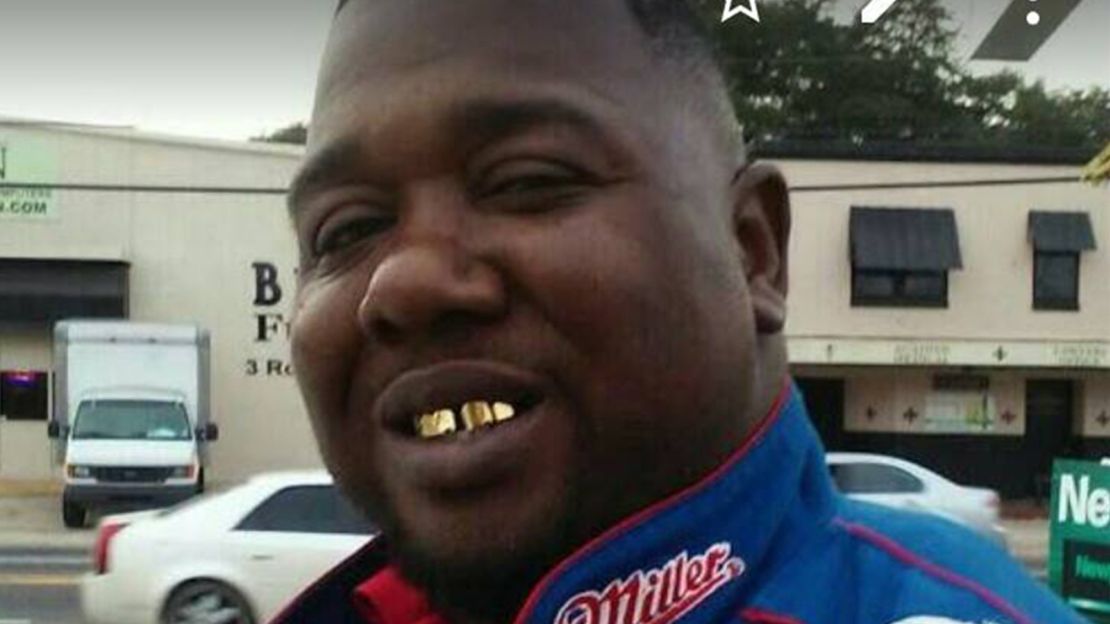Did Baton Rouge police officers know they were going too far in using lethal force against Alton Sterling and choose to do it anyway, violating his federal civil rights? Or did Sterling pose an imminent threat that could only be resolved with lethal force?
The Department of Justice’s investigation of Sterling’s shooting death focused on those questions.
Officers Blane Salamoni and Howie Lake II were accused of violating Sterling’s rights under the Fourth Amendment, which outlaws unreasonable search and seizure, including unreasonable physical force by police.
Investigators searched for evidence that the officers’ use of force could be considered “objectively unreasonable” based on circumstances in the moment. As the law requires, they considered the evidence from the officers’ perspective.
It’s a high bar to reach, and in this case, prosecutors said a review of videos and witness statements did not clear it. Here’s the Justice Department’s explanation of why the evidence did not support a Fourth Amendment violation beyond a reasonable doubt:
The officers’ actions were reasonable under the circumstances
Federal investigators consulted use of force experts to evaluate the officers’ response. They concluded their actions were reasonable given the situation and thus met constitutional standards based on the following factors:
- The officers were responding to a call that someone matching Sterling’s description brandished a weapon and threatened another person
- Sterling was large and strong
- Sterling struggled with officers and failed to follow orders
- The officers used several less than lethal techniques to subdue Sterling before using lethal force when Salamoni believed that Sterling was reaching for a gun

It’s not clear that Sterling was NOT reaching for his gun
To prove a Fourth Amendment violation, the government had to disprove the officers’ accounts and find another one that showed their actions were “objectively unreasonable.”
According to the officers, Sterling reached for a gun as they pinned him to the ground. To evaluate their claim, investigators focused closely on the location of Sterling’s right hand.
They reviewed police body camera footage, bystanders’ cell-phone videos and surveillance video from the store where the shooting occurred around 12:30 a.m. on July 5, 2016. They looked for evidence of the location of Sterling’s right hand as he struggled with the officers who tried to subdue him.
The video shows Salamoni with his weapon holstered tackling Sterling to the ground. Lake kneels on Sterling’s left arm while Salamoni tries to gain control of Sterling’s right arm. Salamoni yells, “Going for his pocket. He’s got a gun! Gun!” and tries unsuccessfully to grab Sterling’s right hand. Lake draws his weapon and yells at Sterling to not move.
According to the Justice Department, Sterling’s right hand is not visible to the cameras when Salamoni again yells that Sterling is “going for the gun!” Salamoni pulls out his gun and fires three shots into Sterling’s chest.
“This evidence suggests that Officer Salamoni fired his weapon when he believed that Sterling was going for his gun a second time, after Officer Lake had warned Sterling not to move,” the Justice Department said.
“Although the videos do not show Sterling’s right hand at the time those shots were fired, they show that Sterling’s right hand was not under Officer Salamoni’s control. The evidence also cannot establish that Sterling was not reaching for a gun when Officer Salamoni yelled that Sterling was doing so.”
Sterling continued to ‘move’ after he was shot
The investigators also concluded that Salamoni’s second series of shots were reasonable.
Although the videos show that Sterling’s right hand was not in or near his right pocket, he continued to move after being shot, despite Lake’s commands not to, the Justice Department said.
Meanwhile, Salamoni was lying on the ground next to Sterling, facing his back.
“Given these circumstances, the evidence cannot establish beyond a reasonable doubt that it did not appear to Officer Salamoni that Sterling was reaching for his pocket,” the Justice Department said.
There’s not enough proof that the officers acted intentionally
To prove a Fourth Amendment violation, prosecutors must also prove an officer acted willfully, or that he knew his actions were unreasonable and took them anyway.
For many of the same reasons described above, the Department of Justice concluded the evidence was insufficient to prove the officers’ actions were a willful violation of the Fourth Amendment.
“This evidence suggests that Officer Salamoni fired his weapon when he believed that Sterling was going for his gun a second time, after Officer Lake had warned Sterling not to move,” the Justice Department said.
In order to prosecute the case, the government would have to prove not only that Sterling was not reaching for his gun, but also that Salamoni did not actually believe Sterling was reaching for his gun after being warned not to move, the agency said.
Taken with the use of force experts’ assessment that Sterling appeared to pose a threat because he was still moving and his right hand was not visible, the Department said it “cannot prove either that the shots were unconstitutional or that they were willful.”



